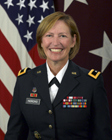Nurses addressing access, quality & health
 The first week of May, 2300 registered nurses from 123 countries attended the International Council of Nurses Conference in Malta. We left challenged and charged to act on the innovative ideas presented by this year’s 70 expert presenters. The topics covered were extensive including the massive increase of non-communicable diseases (NCDs), primary care, climate change, disaster nursing, and gender violence. CHMP’s co-director, Diana Mason, delivered the keynote focusing on the conference theme, nurses driving access, quality and health, addressing social determinants of health. She provided insights into how mobile health creates access to health care and selected innovative models of care designed by nurses globally challenging us to think broadly on how we can impact change to increase access and quality care. Mason crafted a powerful visual presentation that provided the backdrop to her engaging, thought-provoking presentation which earned her a standing ovation.
The first week of May, 2300 registered nurses from 123 countries attended the International Council of Nurses Conference in Malta. We left challenged and charged to act on the innovative ideas presented by this year’s 70 expert presenters. The topics covered were extensive including the massive increase of non-communicable diseases (NCDs), primary care, climate change, disaster nursing, and gender violence. CHMP’s co-director, Diana Mason, delivered the keynote focusing on the conference theme, nurses driving access, quality and health, addressing social determinants of health. She provided insights into how mobile health creates access to health care and selected innovative models of care designed by nurses globally challenging us to think broadly on how we can impact change to increase access and quality care. Mason crafted a powerful visual presentation that provided the backdrop to her engaging, thought-provoking presentation which earned her a standing ovation.
On May 12th the world honored the achievements of nursing on International Nurses Day. In the United States, it stretches into a full week – with National Nurses Week.



